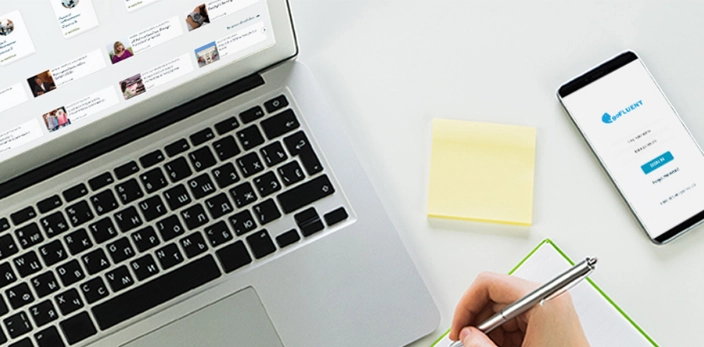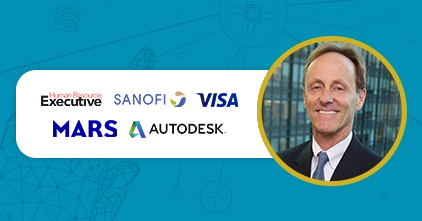With L&D adapting to new realities, there’s no question that corporate learners today need digital learning more than face-to-face. Read on to learn more about the hows and whys.

Aside from influencing the way we live, work, and connect, COVID-19 has also impacted the way we learn. That’s why at the onset of the pandemic, learning leaders around the world had to shift their L&D initiatives overnight, rushing into digital transformation and making the sudden switch from face-to-face training to online learning.
As employees are now accessing learning from home, it’s safe to say that digital learning in its most general sense has slowly been replacing the traditional classroom setup. In fact, only 5% of organizations say that their learning strategy, investment, and resourcing will go back to what it was before. More than that, research shows 80% of organizations believe their use of digital learning will remain the same, increase or decrease only slightly as restrictions on live training ease.
So if you think that digital won’t be as big in the ‘new learning era,’ it’s time to think again because many say that digital will even be the future of work and learning!

Making the move toward online learning
The benefits of developing a digital learning strategy is a huge business advantage in the long run. Not only is it smart, but it’s also sustainable.
First of all, there’s long been a demand for digital learning. Findings from Bersin by Deloitte, Fosway, and many more revealed that people today are busy but keen to learn. They want personalized content but quickly lose interest when content is not readily available or doesn’t target their learning needs and goals.
The good thing about digital learning is that employees can turn to their devices and access on-demand, high impact resources whenever they have a few minutes to do a little learning. This brings us to the next benefit of digital learning: Flexibility.
Employees now have the freedom to completely control their learning schedule, making it possible for them to learn at their own pace and convenience. For the modern learner who spends 33% of their time in meetings already, they want to learn anytime and anywhere, not being constrained by a schedule. In a fast-paced world where time is in very limited supply, people want more control of when they undergo training.
While they’re making the best use of their time, it’s important to note that it doesn’t at all affect learning quality. In fact, the Research Institute of America found that eLearning increases retention rates 25% to 60% while retention rates of face-to-face training are very low in comparison: 8% to 10%. This is because online learning materials are visually stimulating, concise, and more interactive.
With those reasons and more, it’s easy to see why most organizations are digitizing their L&D efforts and planning to stick with them for the years to come.
Take the F2F experience and make it digital
Although the great aspects of in-person training can’t be denied — it’s personalized, dynamic, and minimizes miscommunication — let’s not overlook that digital learning can do more if not the same. In other words, digital can take the very best of face-to-face training and do it better. Here are a few key ways how:
Trainer-student interaction
It’s time to shift our mindset. Online doesn’t have to mean impersonal.
The biggest differences between online and face-to-face learning have always been in the realm of fostering connection and collaboration between the facilitator and learners. While this concern is very valid, who’s to say that digital learning can’t achieve the full extent of teacher-student interaction? No one! That’s because the social element of face-to-face learning can be taken online.
Contrary to what others have assumed, the richness of information and memorable experiences can still be deduced through behavior and one’s mannerisms, gestures, tone, language, and volume of voice, all thanks to video-conferencing tools and features.
With modern technology, the workforce of today can collaborate with their trainer just as effectively. Learners are free to express themselves, convey ideas, and even ask questions. On the other hand, trainers are now more than just teachers, they’re facilitators of learning. Meaning, they guide and assist learners based on their unique needs and goals. Through one-on-one virtual sessions, learning is all the more personalized since learners can go over an article, video, or document with their trainer, and receive objective-focused instant feedback during or right after the lesson.
So if you’re worried that digital takes the human aspect of learning out of the equation, worry not because it doesn’t!
Collaboration with other learners
To further add the “human touch” to one’s learning experience, employees can take part in virtual group classes. By virtual classes, we mean an online, synchronous environment, where learners join a group with a live trainer. Think of the traditional classroom learning experience and bring that online.
Similar to how they would in a face-to-face training room, employees can participate in conversations and collaborate with other learners. How? Through interactive whiteboards, file sharing, and chat rooms. This makes the experience as engaging as ever since group interactions facilitate active learning, shared knowledge, and promote social interaction and a supportive eLearning community.
True enough, more and more L&D leaders are discovering that the virtual classroom can be equally (or even more effective) than certain F2F offerings, provided that these sessions are designed and delivered properly. What does this mean? This means online group classes should:
- Last for the right amount of time. Unlike in-person training which takes hours, virtual classes can make the best use of a learner’s time since it’s usually shorter but just as effective and efficient in retaining knowledge.
- Be interactive. Learning happens best when everyone is given the chance to speak. Don’t cram it with content and one-way communication. Rather, spend the very valuable workshop time helping the learners process and apply the learning by encouraging them to actively participate.
- Have learning content and materials that work well for the online space. Many transitions from F2F to digital fail simply because conventional learning content doesn’t fit the digital platform. So be sure to take those day-long training materials and convert them to multiple shorter blocks of eLearning.

Relevant, readily available learning content
It’s time to say goodbye to overwhelming, inflexible content and say hello to short, bite-sized courses!
Modern learners want high-value content that’s customized and relevant to their needs, not long-form learning resources that will consume most of their time. If they don’t find such content available, they’ll get impatient and start searching for answers on their phones or laptops. So as a learning leader, it’s important to provide them with the right digital resources, ready whenever they need it, and time-efficient for busy adult learners.
A good rule of thumb is to make the content short enough to be engaging, and complete enough to be effective. Because that’s where retention happens.
In an age where choosing the most relevant content is the key strategy in creating a more time-efficient and targeted corporate training program, L&D professionals are called to do more than just oversee training. You’re also expected to curate content that best suits your workforce’s needs. After all, you wouldn’t want to deliver learning that’s not relevant to them. Right?
Ensure that those online resources are personal and individualized in a way that targets specific learning goals and addresses immediate needs. To do that, consider the context of your company’s working environment and industry, and your employees’ job roles.
So if a learner needs to prepare for a business meeting or presentation in his/her target language, say Italian, you already have a learning resource that can respond to that unique goal.

Futureproof Your Learning
Digital learning is here to stay. It’s already the norm and will continue to be the L&D standard in the foreseeable future. This is why making the switch from face-to-face to digital isn’t just an option anymore, it’s a necessity for generating greater business performance and learning outcomes.



